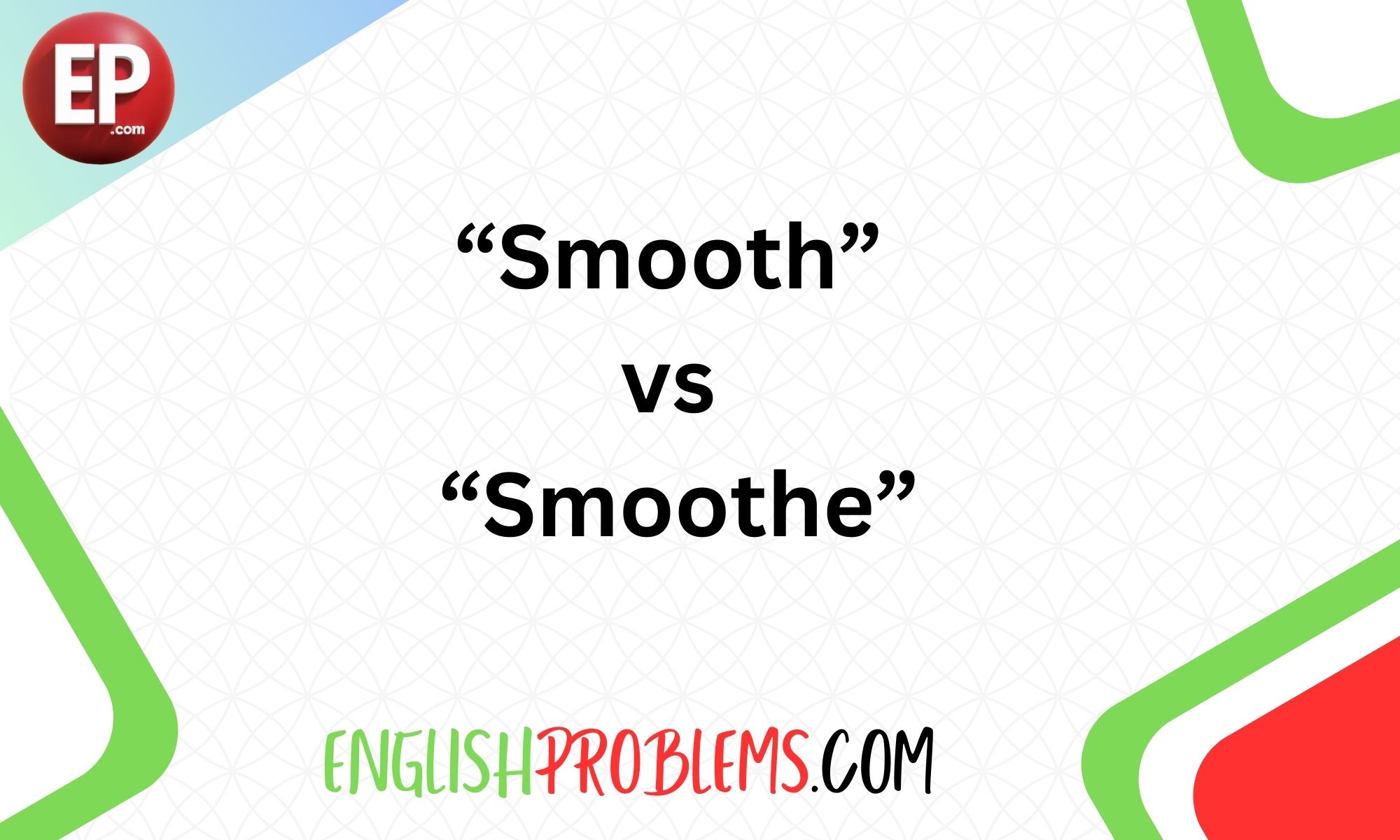Confused about whether to use “smooth” or “smoothe“? You’re not alone. Many people mix up these terms, but understanding their differences can enhance your writing and communication.
In this article, we’ll dive deep into the definitions, origins, and proper usage of “smooth” and “smoothe,” clarifying why “smooth” is the term you should use in modern English.
Understanding “Smooth”
Definition and Usage
“Smooth” is an adjective describing something that is even, free from bumps or roughness, or lacking in difficulties. It is used to characterize textures, experiences, and surfaces that are consistent and without interruption.
For instance:
- Texture: “The smooth fabric felt soft against my skin.”
- Surface: “The table’s smooth finish made it easy to clean.”
- Experience: “The transition from the old system to the new one was smooth.”
Common Mistakes:
- Using “smooth” in contexts where “smoothe” might mistakenly be applied.
- Confusing “smooth” with other similar-sounding words, such as “smoothe,” in informal writing or speech.
Examples in Context
- Smooth Fabric: When you touch a silk scarf, the texture is smooth because it feels soft and even.
- Smooth Skin: After applying moisturizer, your skin might feel smooth to the touch.
- Smooth Ride: A well-maintained car offers a smooth ride on the road.
By sticking with “smooth,” you ensure clarity and correctness in your communication.
Exploring “Smoothe”
Definition and Historical Context
“Smoothe” is an archaic variation of “smooth.” While it might appear in historical texts or older literature, it is not used in contemporary English. The term “smoothe” is largely considered obsolete and has been replaced by “smooth” in modern usage.
Historical Example:
- In some early English literature or older documents, “smoothe” might be used, but these instances are rare and often reflect outdated language conventions.
Examples of Incorrect Usage
- Incorrect in Modern Texts: “The wall’s surface is so smoothe.”
- Historical Misuse: Early English writings might use “smoothe,” but it is not appropriate for current standards.
Despite its historical presence, “smoothe” is not suitable for contemporary use. Opting for “smooth” is the best choice for clear and precise communication.
Historical and Etymological Insights
Origin of “Smooth”
The word “smooth” originates from Old English “smyth,” related to the concept of something being worked or shaped evenly. It has been used since the 14th century to describe surfaces and textures that are even and free of irregularities.
Origin of “Smoothe”
“Smoothe” comes from Middle English “smoþe,” an earlier variant of “smooth.” Over time, “smoothe” fell out of favor as “smooth” became the standardized term.
Evolution of Usage:
- 14th Century: Early use of “smoþe” in literature and documents.
- 16th Century: Gradual shift to “smooth” in standard usage.
- Modern Era: “Smoothe” is rarely seen and considered archaic.
Understanding the historical context of these words helps in appreciating why “smooth” is preferred today.
When to Use Each Term
Contextual Clarity
For contemporary English, “smooth” is the only term you need. It effectively describes surfaces, experiences, and textures without confusion.
Practical Usage Tips:
- In Writing: Use “smooth” for clarity and to avoid archaic connotations.
- In Speech: Opt for “smooth” to ensure your communication is up-to-date and clear.
Avoiding Confusion:
- Double-check your texts to ensure “smoothe” is not mistakenly used.
- Refer to modern dictionaries and style guides to confirm the correct term.
Practical Advice
- For Writers: Always use “smooth” in your manuscripts, articles, and content.
- For Speakers: Stick with “smooth” in conversations and presentations to avoid sounding outdated.
Conclusion
To sum up, “smooth” is the correct term for modern usage, while “smoothe” is largely obsolete. Understanding this distinction enhances your writing and speaking clarity. By choosing “smooth,” you align with contemporary language standards and avoid confusion.
Final Thoughts
Using the right term can make a significant difference in how your message is received. “Smooth” is clear, modern, and universally accepted, making it the best choice for effective communication.

Matthew Porter brings a wealth of knowledge and a vibrant enthusiasm for teaching English to the table. His innovative approach and creative explanations make even the most challenging language concepts accessible and fun. Matthew’s dedication to helping others achieve fluency is evident in every piece he writes.










